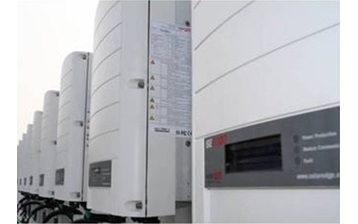Hod Hasharon, Israel– Bouygues Construction, a global leader in sustainable building, completes the installation of its 2.5 MWs of PV modules with the majority optimized by SolarEdge technology at the Challenger site, near Versailles, France. As part of an eco-renovation project, Bouygues Construction specifically selected SolarEdge inverters and power optimizers because the technology facilitated a 20% increase in energy yield.
Bouygues Construction installed six SolarEdge firefighter gateways, which are designed to enable firefighters to immediately stop energy production including decreasing the system voltage to safe DC levels, either manually through an emergency stop button or automatically through a Fire Alarm Control Panel System.
“Bouygues Construction was looking, on the one hand, for technology that would make PV installation safe by allowing the immediate shutdown of energy production on demand, and on the other hand, technology that would simplify maintenance by allowing a faulty PV module to be easily pinpointed.
This is the reason we chose SolarEdge power optimizers. In addition, SolarEdge technology increases our installation’s yield” stated Phillippe Metgès, Director of the Center for General Affairs at Bouygues S.A.
“SolarEdge technology is becoming a standard feature in commercial systems because it improves the bottom line of large projects,” stated Lior Handelsman, VP Marketing & Product Strategy SolarEdge. “Being selected by Bouygues Construction, a leader in its field, demonstrates the growing trend to use module-level optimization in large module-level optimization in order to protect these significant investments.”
On a total surface of 25,000 m2, the Challenger’s PV installation consists of ground-mounted and roof-mounted sections. With 12,180 SolarEdge power optimizers and 202 SolarEdge inverters optimizing part of the installation, the system is expected to produce a simulated 2,500 MWh annually.
The fixed-string voltage in SolarEdge technology allows an increase in the number of modules per string of at least 43% compared to a traditional inverter.






